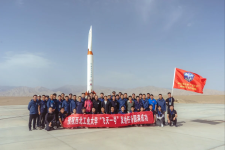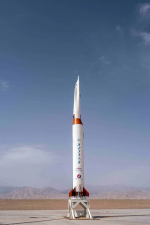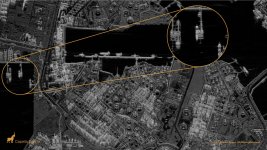They already tested the prototype successfully in 2022 called Feytien. Here the designer celebrates the success with the said missile in the background. The 2022 test the engine range and structural integrity Now they did the guidance and data link

China’s new missile design appears to be based on the Feitian-1 hypersonic vehicle, pictured ahead of its successful test launch in 2022. Photo: Northwestern Polytechnical University

The paper did not provide any information about the missile’s appearance. Still, the design parameters suggest that it may be similar to the Feitian-1 hypersonic vehicle, which the university successfully tested two years ago.
SCMP reports that the Feitian-1 is fueled by kerosene and designed to fly continuously within the atmosphere, making it the world’s first hypersonic vehicle with an extended range.
The researchers added that real-time data from reconnaissance satellites will guide the missile and will switch to its own sensors in the final approach. It would then detonate its warhead when it reaches an effective kill range.

 www.armyrecognition.com
www.armyrecognition.com

China’s new missile design appears to be based on the Feitian-1 hypersonic vehicle, pictured ahead of its successful test launch in 2022. Photo: Northwestern Polytechnical University
Little else is known about the missile
Su and his team have designed an ultra-long-range SAM that has exceeded expectations. The missile is only 26 feet (8 meters) long and weighs 2.5 tonnes. A solid rocket motor will provide the necessary thrust for vertical launch, followed by a ramjet engine to propel the missile into the upper atmosphere.
The paper did not provide any information about the missile’s appearance. Still, the design parameters suggest that it may be similar to the Feitian-1 hypersonic vehicle, which the university successfully tested two years ago.
SCMP reports that the Feitian-1 is fueled by kerosene and designed to fly continuously within the atmosphere, making it the world’s first hypersonic vehicle with an extended range.
The researchers added that real-time data from reconnaissance satellites will guide the missile and will switch to its own sensors in the final approach. It would then detonate its warhead when it reaches an effective kill range.

China develops anti-aircraft missile with 2000 km range | Defense News April 2024 Global Security army industry | Defense Security global news industry army year 2024 | Archive News year
China develops anti-aircraft missile with 2000km range
Last edited:








